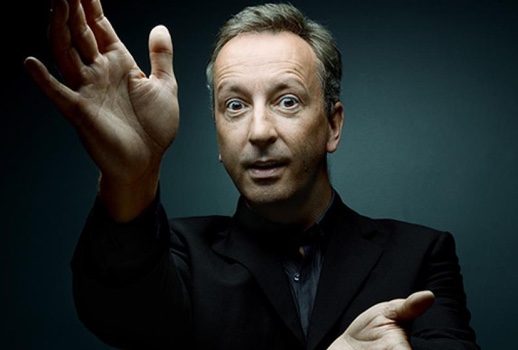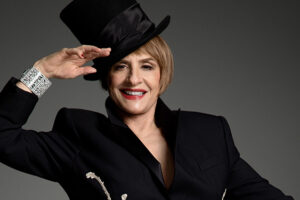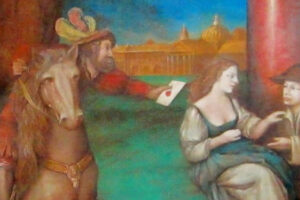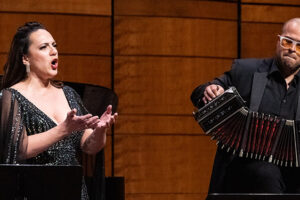

Of all the postwar musicological rediscoveries the most valuable to me has been the resurgence of 17th and early 18th century vocal music, especially from France. Just as that era’s first great composer Lully had been a “foreigner,” the tremendous flowering of this repertoire can be traced primarily to Les Arts Florissants, the group founded in 1979 by Buffalo-born conductor and harpsichordist William Christie.
There were, of course, stirrings before then. During the 1950s the Paris Opéra repeatedly revived its sumptuous production of Rameau’s Les Indes Galantes and the recording of the 1956 Aix-en-Provence Festival’s Platée conducted by Hans Rosbaud featuring the beyond-bewitching Michel Sénéchal in the title role remains essential listening.
The ever-prescient Nadia Boulanger who in the 1930s was doing Monteverdi madrigals when almost no one else was also dipped her toe into her country’s 17th century recording about an hour of Médée, Charpentier’s grand, lone tragédie lyrique.
But the superbly prepared, dramatically vivid efforts of LAF via its extensive discography—first on Harmonia Mundi, then Erato—have brought Lully, Rameau and especially Marc-Antoine Charpentier to a prominence many in the first half of the 20th century could never have predicted.
The other day I tallied up my Charpentier collection: a total of 44 CDs, more than a third of them by LAF, including the first disk I ever bought: Actéon, a recording still in-print 32 years after I nabbed mine.
While Christie was doggedly recording so much Charpentier (who is, as far as I know, no relation to the composer of “Depuis le jour”), he has featured his works on many of his near-yearly visits to New York.
By my reckoning this week’s Mostly Mozart concert was at least the twelfth time the group has performed the composer’s works here, including unforgettable stagings of Médée (with the extraordinary Lorraine Hunt Lieberson as the ferocious sorceress) and David et Jonathas at BAM.
We’ve also heard here the one-act opera Actéon, the exquisite La Descente d’Orphée aux enfers, and many sacred works including the achingly beautiful Missa Assumpta est Maria and the stirring Te Deum which includes Charpentier’s best-known movement because it was used in a thoroughly anachronistic version for decades by the European Broadcasting Union.
Although Christie had conducted about half of the eight iterations of the “Songs of Joy for Eastertide” program, Wednesday’s concert was led instead by Paul Agnew, the Scottish tenor and LAF’s heir-apparent. Although he has only recently having taken up conducting, no one can question Agnew’s immersion in the French baroque, particularly Charpentier.
The time I ever heard him was as Jason during that Médée tour (opposite Hunt Lieberson’s alternate Françoise Semallaz) as well as both David and Orphée. With LAF New York has also heard two of his Rameau specialties—Abaris in Les Boréades and Hippolyte.
Having had reservations about his conducting of the recent LAF Platée several years ago,
I was curious how this program of shortish sacred pieces by Charpentier would go. But the 18 singers and seven instrumentalists were in exceptional form; the young viol-player Juliette Guignard played with particular eloquence.
I’ve heard a good number of ensembles perform this sort of music both live and on recordings but none has ever quite matched the heavenly blend, the endearing fervor, the ravishing glow of LAF’s chorus.
And yet there were moments when I wondered if that familiar transcendent Christie-touch was missing, particularly in the intensely wrenching final chorus of the program’s best-known piece “Le Reniement de St. Pierre” during which Christ weeps bitterly over Peter’s denial.
Even in this imperfect rendition, one felt the composer’s deep debt to his teacher Giacomo Carissimi whose influence brought a vivid Italianate sensuousness to French sacred music, a controversial quality which gave Charpentier no end of trouble from the more ascetic disciples of Lully.
Agnew spoke briefly at the beginning of the concert about the programming; certainly the composer would never have imagined that these dozen or so liturgical pieces would be gathered together for performance in a concert hall.
Agnew argued that the ordering created a sort-of passion play, and the evening worked best keeping that over-arching narrative in mind. Otherwise, there was an unfortunate unvarying sameness to the pieces, many composed with a structure of choral verses alternating with solos or duos or even trios.
A severely attenuated Stabat Mater in particular suffered from its all too predictable form. A highlight not organized that way was Tristis est anima mea which is often performed as a duet for sopranos
but was done instead by the group’s three tenors and three countertenors (or more likely hautes-contre). Its soaring climactic dissonances sent shivers up my spine.
The many solo movements were well taken by chorus members although the constant reshuffling as the singers stepped forward and then back again grew wearying as the evening progressed.
Several stand-outs were sopranos Élodie Fonnard (especially fine as Magdalene in a touching dialogue with the risen Christ) and Virginie Thomas whose glowing work brightened the otherwise dull Stabat Mater, Nicholas Scott’s plangent, soaring tenor occasionally became stressed while Cyril Costanzo’s high bass repeatedly shone with earnest commitment.
The concluding “Alleluias” rang out stirringly but despite two hours filled with moments of ecstatic enchantment I left feeling strangely unmoved. Perhaps also programming music by another composer or devoting the first half, say, to some of Charpentier’s secular music might have proven more involving, more nourishing.
Perhaps my long familiarity with his many sacred works made me less astonished than others in the wildly enthusiastic audience LAF typically attracts here.
Despite my reservations, I am disappointed that (per its website) LAF has no plans in to return to New York curing the next year.
http://www.arts-florissants.com/media/arts-florissants-calendrier-2017-2018-5.pdf
But with Christie again conducting the group will bring their much-traveled double bill of Dido and Aeneas and Actéon (a pairing I first heard in 1990 and again in 1993 and 2010) to California in early November.
New Yorkers however can catch Christie during his annual visit to Juilliard leading student singers, instrumentalists and dancers a program featuring some of Monteverdi’s greatest hits on October 5 at the Peter Jay Sharp Theater.























Comments